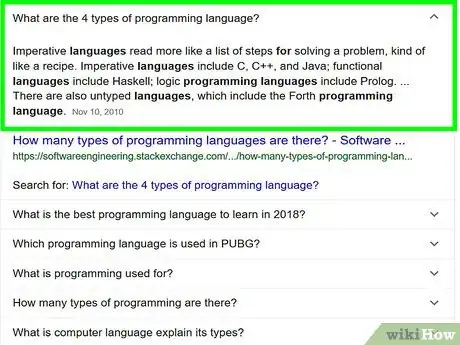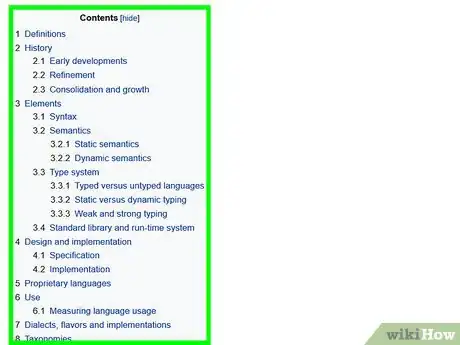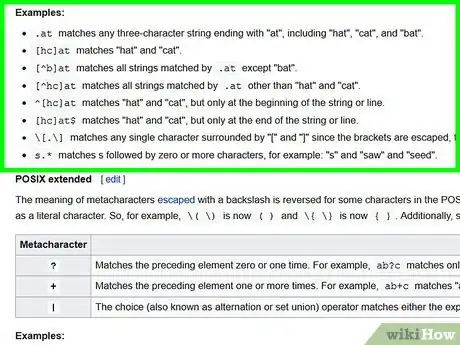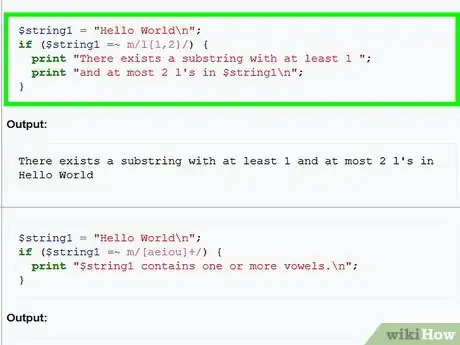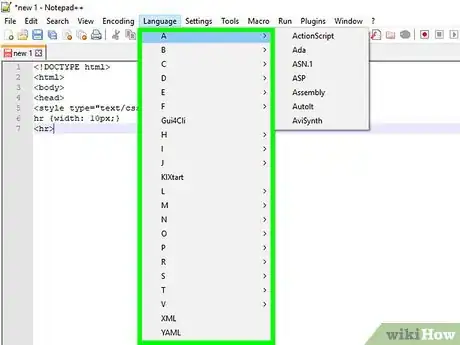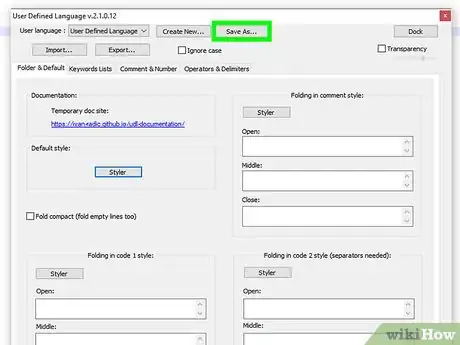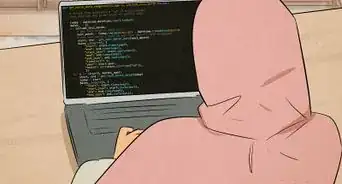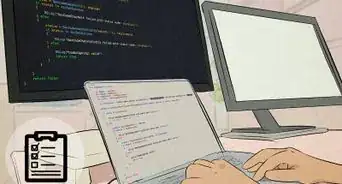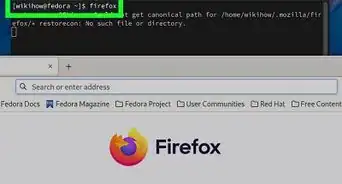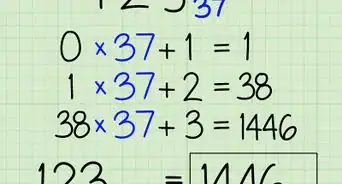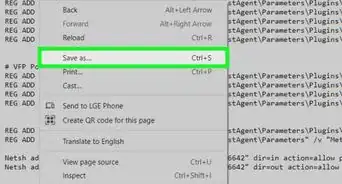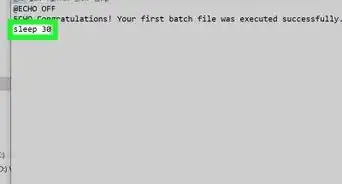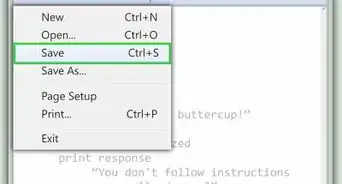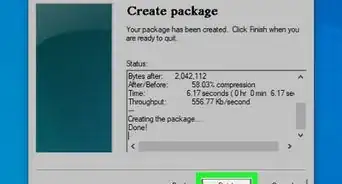X
wikiHow is a “wiki,” similar to Wikipedia, which means that many of our articles are co-written by multiple authors. To create this article, 37 people, some anonymous, worked to edit and improve it over time.
This article has been viewed 434,592 times.
Learn more...
Many people have difficulties or frustrations with the programming languages they use every day. Some want things to be handled more abstractly, while others dislike implementing features they wish were 'standard'. Whether you are an IT professional or just a hobbyist, many times you may find yourself wanting to create a new programming language.
Steps
-
1Become familiar with the technology. You can't create a programming language if you don't know how to use a computer.
-
2Become familiar with the terminology. Compiler writers often use unfamiliar terminology. Read up on compilers before proceeding. Be sure to know everything that you need to know.Advertisement
-
3Decide what problem your language is solving. Is it addressing a domain-specific problem, or is it a general-purpose language?
-
4Think about the semantics of your language and the concepts of it.
- Are you going to allow direct pointer access or not?
- What are the data types of your language?
- Is it a static or dynamic language?
- What is your memory model? Are you going to use a garbage collector or manual memory management? (If you use a garbage collector, prepare to write one or adapt an existing one to your language.)
- How are going to handle concurrency? Are you going to use a simple threading/locking model or something more complex like Linda or the actor model? (Since nowadays computers have multiple cores.)
- Are there primitive functions embedded in the language or will everything come from a library?
- What is the paradigm or paradigms of your language? Functional? Object-oriented? Prototype (like JavaScript)? Aspect-oriented? Template oriented? Or something entirely new?
- How is your language going to interface with existing libraries and languages (mainly C)? This point is important if you're building a domain-specific language.
- Finally, some of the answers to these questions are going to be answered by the second step and will help you answer the next step.
-
5Think of some specific tasks that someone would want to be able to perform with your language. For example, 'they may want to direct a robot to follow a line' or 'they may want to create relatively portable desktop programs in it' or 'they may want to create web applications with it'.
-
6Experiment with syntax ideas (the text of the language) for the above examples.
- Be careful to keep your language in the context-free language category or something inside it. Your parser generator and you will appreciate it later on.
-
7Write out a formal grammar for the syntax.
-
8Decide whether the language will be interpreted or compiled. Meaning that in the interpreted world your user will typically edit your program in an editor, and run it directly on the interpreter; while in the compiled world, your user will edit your program, compile it, save the resulting executable somewhere and run it.
-
9Write the front end scanner and parser or find a tool that helps you with this.
- Also, think about how your compiler/interpreter will warn your user about erroneous programs and syntax errors.
-
10Use the parser information to write the object code or an intermediate representation. Have the parser create an AST, then create your object code from the AST using three address code or its big brother SSA, then create a symbol table to define your functions, global variables, etc.
- Also, depending on your language, you may also want to create virtual pointer tables or information tables for your classes (in order to support reflection or RTTI).
-
11Write the executor or code generator that will bind everything together.
-
12Write many test programs to test the language.
- You want to create programs that stress the burdens of your formal grammar in order to see that your compiler accepts everything that is inside your definition and rejects everything that is outside of it.
-
13Consider how the user will debug their own programs.
-
14If your language uses a standard library, you will want to write it. Along with a garbage collector or other runtime features if you need it.
- Specifically, if you write a compiler, you will need the code that the operating system will execute in order to begin running the user code (for example, allocating all global variables).
-
15Publish your language, along with the specification for it and some examples of what you can do in it.
- Don't forget to document how you can integrate with existing libraries, languages and how to use the runtime features and/or standard library.
Advertisement
Community Q&A
-
QuestionWhat are top 5 best programming languages?There is no "best" programming language. Each programming language has its strengths and weaknesses. It's up to the developer to determine whether or not a programming language suits his or her project based on those strengths and weaknesses.
-
QuestionHow do I publish a programing language?
 Community AnswerYou should create a website, which, if you are familliar with coding, can be done very cheaply, or you can pay a little bit more to get a drag and drop website editor. You should write everything about how to use the code on the website. After that, you should share it on forums and social media sites. If you have created a real program in your language, this might help, because people see it is a good language.
Community AnswerYou should create a website, which, if you are familliar with coding, can be done very cheaply, or you can pay a little bit more to get a drag and drop website editor. You should write everything about how to use the code on the website. After that, you should share it on forums and social media sites. If you have created a real program in your language, this might help, because people see it is a good language. -
QuestionWhere do I program a new language on a PC?
 Community AnswerYou can use freeware like Sublime Text and ConTEXT, Notepad++, or even just Notepad to get started!
Community AnswerYou can use freeware like Sublime Text and ConTEXT, Notepad++, or even just Notepad to get started!
Advertisement
Warnings
- Think if you really need a new language, and what your language has of new that other languages don't have (It may be a combination of features or a single feature).⧼thumbs_response⧽
- Writing languages is difficult if you don't know what you're doing. It takes a lot of practice, too.⧼thumbs_response⧽
- Prepare to spend some time in language design, since you won't have a chance to change your language once you've written the compiler and past the design point.⧼thumbs_response⧽
- Don't try to base your features into a union of several languages, like saying that your language will be a union of language X, language Y and language Z. History has shown us that languages created in such a way will never find success, or everyone would be programming PL/1 instead of something based on C.⧼thumbs_response⧽
Advertisement
Things You'll Need
- Patience.
- Knowledge about language features and language design (you may want to read Programming Language Design Concepts from David A. Watt).
- Knowledge about compiler theory (since you will be writing a compiler/interpreter for your language and your implementation will be the reference implementation).
- Uses for your language (remember that some of the most used languages like C or Lisp were created in order to do something specific like creating Unix or doing symbolic computation).
About This Article
Advertisement


